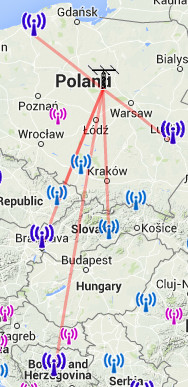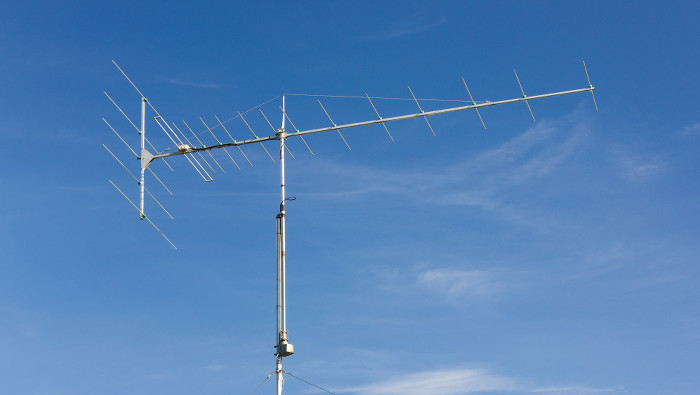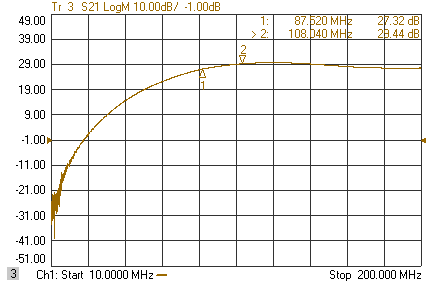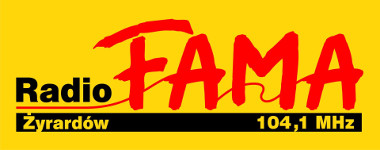Category: News / Aktualności
Sporadic-E signal levels
The Sporadic-E is the strongest available propagation mode. An ionized “cloud” acts like a metal reflector, that allows signal to skip over a huge distance. It is possible to receive many stations with just a small portable radio and a telescopic antenna. With better equipment, when the frequency is clear, it is also possible to receive stations that transmit at extremely low power, like 50W, with full RDS and stereo! So, the signal level must be really strong, but how strong?
Retransmisja FM podczas Tropo
Na ekstremalnie silny dukt troposferyczny przyjęło się mówić falowód. Sygnał oczywiście nie jest przesyłany bezstratnie, ale jego poziom potrafi bez problemu przykryć inne bliskie stacje, których nie mamy szans wytłumić. Tak też było w niedzielę, 7 czerwca 2015r. Po rozległych burzach z silnym opadem deszczu pojawiła się jak dotąd najsilniejsza propagacja w tym roku, przynosząca ogromne sygnały z całej południowo-zachodniej Polski!
Wstrajając się na 98,3 zamiast Radia Elka można było usłyszeć tym razem… zniekształcone Radio Plus. Szerokie filtry w tunerze FM zastosowanym do retransmisji głogowskiej częstotliwości 89,6 wpuściły także sąsiedni, silniejszy sygnał Radia Plus Gniezno 89,5:
RDS dekodował się z błędami ze względu na gigantyczną dewiację stacji (modulacja nie mieściła się w “analogowym” filtrze pośredniej tunera – 180 kHz mimo, że na nagraniu widać “309 kHz”).
935km aircraft scatter from Bosnia
On May 1st, 2015 I received 89.3 Federalni Radio from Vlašić, Bosnia and Herzegovina for the first time ever. Distance between my QTH near Płock and Vlašić is 935 km. I have increased my previous best airscatter distance by 107 km (96.5 Radio Beograd 2/3 from Crveni Čot, Serbia at 828 km). Actually I have tried to receive BIH many times before, but I have recently discovered that an aircraft in central Slovakia produces a reliable reception of Crveni Čot. I have been always thinking that planes around POL-CZE border are the limit – I was wrong!
This reception is possible only under three circumstances. It is quite difficult to fulfill all of them at the same time.
- Airbus A380 flight near Martin, Slovakia at an altitude of 40 000 ft.
- Totally empty frequency, without any marginal signals during reception.
- No local QRM at all.
Ad 1. Airbus A380 flight is on its way usually everyday. I have also checked lower altitudes like 38 000 ft and smaller planes but with no luck at all! Note that distance between me and the plane is about 400 km and between Vlašić and plane is about 535 km. It is indeed asymmetrical, as my altitude is only 114m + 10m agl, and Vlašić is 1943m + 40m agl.

This flight reflects Crveni Čot near Brezno (blue) and Vlašić near Martin (green).
 Ad 2. This frequency is almost empty. Unfortunately almost makes a huge difference… There are many more planes in range which may produce reflection of other stations on 89.3 including Polish RMF FM (Lublin or Koszalin via backscatter), Rádio Expres from Slovakia (1kW @ 463km, don’t get fooled by its low power, as it peaks to a RDS level!), Radio_FM (thankfully Kamzík transmitter is obstructed by some mountains in Czech Republic and Slovakia, furthermore there is some attenuation in my direction) and Hitrádio Orion from Czech Republic (
Ad 2. This frequency is almost empty. Unfortunately almost makes a huge difference… There are many more planes in range which may produce reflection of other stations on 89.3 including Polish RMF FM (Lublin or Koszalin via backscatter), Rádio Expres from Slovakia (1kW @ 463km, don’t get fooled by its low power, as it peaks to a RDS level!), Radio_FM (thankfully Kamzík transmitter is obstructed by some mountains in Czech Republic and Slovakia, furthermore there is some attenuation in my direction) and Hitrádio Orion from Czech Republic (listed as vertical, but it was actually broadcasting in both polarizations the antenna system has been presumably changed this year, and it is audible very marginally in vertical now).
Moderate tropospheric propagation makes this frequency also useless. The map on the right shows all stations marked with red paths that may interfere on 89.3.
Ad 3. The worst thing are high voltage power lines (110 kV) near my antennas which produce stronger or weaker impulse noise most of the time, especially during sunny and dry days. Arcing at 2*50 Hz (or every 10 ms) affects overall sound quality and RDS decoding threshold. With higher level of this noise, it is impossible to receive very weak stations at all…
Federalni Radio seems to transmit with low deviation all the time. The modulation is not so over-compressed unlike most of FM stations. It is intelligible with narrow 30kHz filters on XDR-F1HD. Some meteor-scatter pings in the background make me sure that selected filter is right before an upcoming airscatter reception. Such low bandwidth eliminates much of adjacent channel interference and of course lowers the noise floor! For best results I use an additional preamp with noise figure rated 2dB inline between my Körner 19.3 antenna and tuner.

Körner 19.3 Yagi, 114m asl + 10m agl on AR-303 rotator
Okay, now let’s move to some statistics about the reception. Theoretically it is possible to receive Vlašić every single day, but it may be practically impossible taking into account all the mentioned requirements.
The reported signal level varies ±2dB around 30dBf (way too weak for reliable measurement). The preamp has around 27.5dB gain at this frequency, see the plot below. So real signal level is just around 2.5dBf (=0.35µV). But remember that is just a rough approximation.

I am pretty sure that it is possible to extend my record somewhat more for such high-elevated locations like Vlašić. One can always try to stack more antennas (I have seen photo of an array of four Körners in the past), increase height of the antenna (not sure though, it may significantly increase signal of unwanted stations instead of the desired DX) or use narrower filters (10kHz filter for classical music on German station, why not?). I’m thinking at this point about Wendelstein (1828m asl + 25m agl) which also seems to be a perfect pick. BR Klassik broadcasts classical music and sometimes may fit very narrow filters. Well, Wendelstein is also one of my records – the furthest aircraft scatter reception with RDS PI via Airbus A380 at 774km.
Czeskie Radio Impuls w mono

Jak już wspominaliśmy w artykule dotyczącym mocy multipleksu FM (MPX Power), Radio Impuls testowało w zeszłym roku emisję mono na częstotliwości 96,6 w Pradze. W Czechach obowiązuje limit maksymalnej mocy MPX=0dBr, a więc stacje mają znormalizowaną głośność odczuwalną dla słuchacza. Pilot stereo na podnośnej 19kHz zwykle zajmuje od 8 do 10% (6-7.5kHz) całej dewiacji. “Cenne” miejsce zajmuje również różnica międzykanałowa L-R na podnośnej 38kHz. Wygląda na to, że właściciel stacji jednak zdecydował się porzucić stereofonię, na rzecz słupków słuchalności, zwracając uwagę słuchaczy nieco wyższą głośnoscią niż inne stacje w eterze. Czy skutecznie? To się dopiero okaże…
Od pewnego czasu na częstotliwości 87.6 z Brna emitowano Radio Impuls w mono. Początkowo myślałem, że to jakaś awaria – w końcu po jednorazowym teście w Pradze, stacja powróciła do emisji stereofonicznej. Jednak dziś się wszystko wyjaśniło – kolejne częstotliwości również nadają w mono! 89.0 Ostrava, 100.5 Valaské Mezirící, 106.0 Pardubice… Trutnov na 92.1 i Jesenik 100.9 pozostał w stereo – ciekawe na jak długo.
FAMA Żyrardów 104,1 – emisja testowa
Dnia 6 marca 2015 r. rozpoczęła się oficjalna testowa emisja Radia FAMA Żyrardów 104,1. Wydarzenie to odbyło się z jednoczesnym koncertem zorganizowanym przez stację w żyrardowskim Centrum Kultury. Radio otrzymała koncesję 3 lutego 2014 r. Sygnał pojawił się w eterze dopiero ponad rok później. Stacja rozsyła swój sygnał z komina przy ulicy Okrzei w Żyrardowie. Moc wynosi 1kW ERP, a anteny nadawcze są zamontowane w polaryzacji pionowej na wysokości 75 m.n.p.t.
Winter Tropo 2015 (D, BEL, NOR, HOL)
February 11, 2015 is a day that will mark itself in history of FMDX. For the first time ever I have experienced a winter tropo with distances over 1000 km including Belgium, Netherlands and Norway. Furthermore, both Dutch and Norwegian signals were persistent at the same time! First signs of propagation appeared on February 10 evening. I heard a weak, but stable 89.3 hr3 from Frankfurt am Main, which is a relatively good beacon for tropo. This was the first distant DX over 800km and it lasted continuously during almost entire tropospheric ducting opening. Other locations from Germany were also audible – some frequent ones like Torfhaus, Kreuzberg, Brocken, but also rare Ederkopf (100.7 WDR4).
